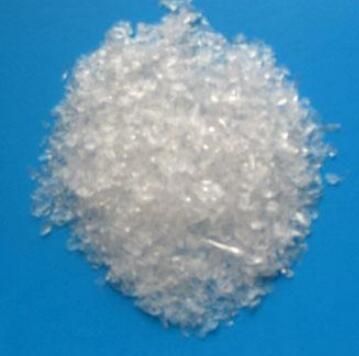
FOB Price
Obtener el precio más reciente|
Minimum Order
Place of Origin:
-
Price for Minimum Order:
-
Minimum Order Quantity:
-
Packaging Detail:
-
Delivery Time:
-
Supplying Ability:
-
Payment Type:
-
Persona de contacto Mr. Gerhold
106, Xiamen, Fujian
Physicochemical
properties of Niobium(V) oxide
Character White powder.
The relative density is 4.*7 g/cm3.
Melting point ***5 ° C ± 5 ° C.
It is insoluble in water, hardly soluble in acid, and soluble in
molten potassium hydrogen sulfate or alkali metal carbonates or
hydroxides.
Solution: do not dissolve in water, in addition to sulfuric acid
and hydrofluoric acid, insoluble in other acids.
It turns yellow when heated and turns white after cooling.
Decomposed by co-melting with an alkali metal acid sulfate,
hydrochloride or hydroxide.
Use of
Niobium(V) oxide
Used as a single crystal of nickel phthalate, special optical
glass, high frequency and low frequency capacitors and
piezoelectric ceramic components. It is also used in the production
of various niobium alloys for niobium and special steels. It is a
raw material for the preparation of hydrazine and its compounds.
Also used as a catalyst, refractory material.
Safety of
Niobium(V) oxide
The high-purity Niobium(V) oxide are packed in double-layer
polyethylene plastic bottles, each with a net weight of 5kg and
tightly sealed. The back jacket polyethylene plastic bag is placed
in a hard box and filled with paper dust to prevent cocking. The
net weight of each box is *0kg. The industrial products are
double-layer polyethylene plastic bags and outer jackets with a net
weight of *0kg per drum. Store in a well ventilated, dry place. Do
not stack in the open air. The package should be sealed. Protect
from rain and packaging when transporting.
In case of fire, use water, sand and fire extinguishers to save. Toxicity and protection: Occupational poisoning has not been documented. Workers who use iridium complexes have a relatively high incidence of upper respiratory tract, which may be related to the effects of separated hydrogen fluoride and fluoroantimonate. The maximum allowable concentration of cerium and its oxide is *0 mg/m3; the fluorine-containing compound is usually calculated as fluorine, i.e., 1 mg/m 3 . To work in an environment with a high dust content, wear a respirator and pay attention to ventilation and dust removal.